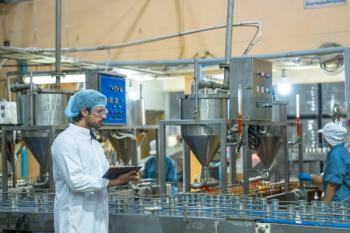
Developing Linear and Non-linear Raman Approaches to Address Important Biomedical Questions
As a preview to SciX 2023, Spectroscopy magazine sat down with Juergen Popp of the Leibniz Institute of Photonic Technology to ask him about his research exploring the use of Raman spectroscopy in applications such as infectious diseases and cancer diagnostics.
Popp spoke with us before the SciX Conference in Sparks, Nevada, where he is set to give a talk titled, “Applied Raman spectroscopy for Clinical Diagnosis and Therapy to Fulfill Currently Unmet Medical Needs” and accept the Charles Mann Award as the 2023 recipient on Tuesday October 10, 2023, at 11:00 am in Sierra 5 at the Golden Nugget Casino in Sparks, Nevada.
Juergen Popp is a prominent figure in the field of biophotonic and optical health technology research. He earned his PhD in Physical Chemistry and conducted postdoctoral research at Yale University before returning to Würzburg University to complete his habilitation. Since 2002, he has held a chair for Physical Chemistry at the Friedrich-Schiller University Jena, Germany, and since 2006, he has served as the scientific director of the Leibniz Institute of Photonic Technology in Jena.
Popp's research spans from fundamental photonic research to clinically applicable methods. His work primarily focuses on multicontrast microspectroscopic imaging, fiber, chip, and nanoparticle-based techniques, and chip-based molecular point-of-care solutions, addressing biomedical, environmental, and life science challenges. Notably, he has expertise in developing and applying innovative Raman spectroscopy approaches for pathology, oncology, and infection/sepsis diagnostics. Popp's research also extends to material science, utilizing advanced data analysis techniques such as machine learning.
He has an impressive publication record, with over 960 journal papers and 20 patents. His work has been cited over 31,000 times, and he boasts an h-index of 77. Popp actively collaborates with academic, clinical, and industrial partners, securing more than 100 million Euros in third-party funding. He has been recognized with numerous awards, including the Robert Kellner Lecture Award, Pittsburgh Spectroscopy Award, and Ioannes Marcus Marci Medal, among others. His commitment to interdisciplinary research and translation is evident through his involvement in various national and international projects and conferences. Popp's contributions have earned him prestigious honors and fellowships, making him a leading figure in the field of biophotonics.
In this interview clip, Popp answers the following question:
- Your research particularly focuses on the development of innovative linear and non-linear Raman approaches in a multimodal approach together with other optical/spectroscopical methods to address important biomedical questions in areas such as infectious diseases and cancer diagnostics, as well as environmental applications and food safety. What benefits do the Raman approaches offer that other techniques do not?
This interview segment is the first of several conducted in conjunction to the SciX 2023 conference. You can see our latest conference coverage, including our additional video interviews conducted at SciX, at the following link:
Newsletter
Get essential updates on the latest spectroscopy technologies, regulatory standards, and best practices—subscribe today to Spectroscopy.





